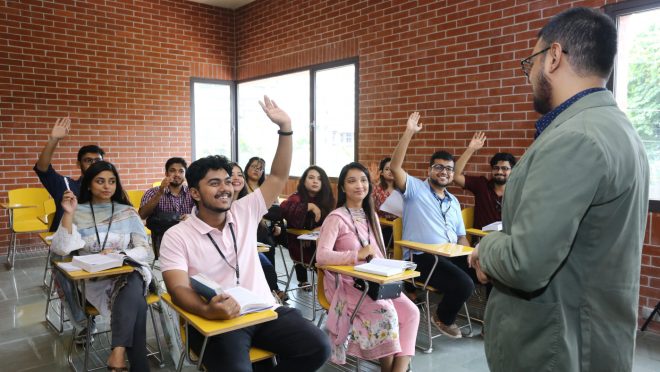Teacher evaluation in public universities can be a game changer
The lack of a policy supporting teacher evaluation in public universities in Bangladesh not only hinders the growth and development of students but also affects the overall quality of education
Teacher evaluation in public universities can be a game changer
The lack of a policy supporting teacher evaluation in public universities in Bangladesh not only hinders the growth and development of students but also affects the overall quality of education

In higher education, student evaluations of teachers have become a global standard as a necessary tool to ensure student-centered learning and promote accountability within universities. However, in our public universities, this practice is noticeably absent.
Student evaluations often provide significant insights into the efficacy of a course or program. They help identify areas of strength and areas for improvement. More importantly, they shift the focus from teacher-centered learning to student-centered learning, thereby enhancing students’ engagement and motivation.
Unfortunately, the lack of a policy supporting teacher evaluation in public universities in Bangladesh not only hinders the growth and development of students but also affects the overall quality of education.
Teaching effectiveness can be measured in several ways. It could be through ‘Student Achievement Growth,’ which measures the teacher’s impact on the student’s academic progress over time. This measure is crucial as it helps determine whether a teacher’s instructional methods are effective in improving students’ academic performance.
Another measure could be through ‘Student Perceptions of Teacher Effectiveness and Classroom Instructional Climate,’ which involves obtaining feedback from students about their perceptions of the teacher’s effectiveness and the learning environment in the classroom. This feedback provides teachers with insights into how their teaching methods and classroom management techniques are perceived by students.
Peer reviews can also be a powerful tool for teachers to improve their teaching practices. They offer an opportunity for colleagues to observe one another’s teaching strategies and discuss ways to better align those practices with disciplinary and departmental goals.
Peer reviews not only foster a culture of collaboration among teachers but also promote a continuous learning environment where teachers can learn from each other’s experiences and expertise.
Teachers should understand the feedback from both students and peers, focusing on constructive suggestions and looking for patterns or themes that emerge. They should use the feedback to reflect on their teaching practices and set specific goals for improvement.
However, teachers can sometimes make mistakes when interpreting student evaluations. They might focus too much on negative comments or misunderstand the feedback. They might overlook positive feedback and not recognize their strengths. They might take the feedback personally rather than see it as a tool for professional growth.
Just like student evaluations, peer reviews are tools for growth and improvement, and they should be used as such. Teachers should celebrate their successes, such as a lesson that went especially well or a new instructional technology they tried.
It’s high time that our public universities recognize the importance of student evaluations and peer reviews. These tools not only help improve teaching practices but also contribute to the overall development of the education system.
By implementing these practices, public universities can enhance their teaching quality, promote accountability, foster a culture of continuous learning among teachers, and ultimately improve students’ learning experiences.
Moreover, these practices can also help in creating a more open and transparent educational environment. They can encourage teachers to continuously strive for excellence and innovation in their teaching methods. They can also empower students by giving them a voice in their learning process.
In addition, these practices can also contribute to the overall reputation and competitiveness of our public universities on the global stage. They can help these institutions attract more high-quality students and faculty from around the world.
However, it’s important to note that implementing these practices is not without challenges. It requires a significant shift in mindset and culture within universities. It requires strong leadership and commitment from all stakeholders involved.
Despite these challenges, the potential benefits of implementing student evaluations and peer reviews far outweigh the costs. They represent an untapped potential that could significantly enhance the quality of education in our public universities.
Therefore, it’s crucial for all stakeholders involved – from policymakers to university administrators, from teachers to students – to work together to make this vision a reality.
In the end, it’s all about creating an educational environment that truly values and promotes learning – an environment where teachers are empowered to teach at their best, and students are empowered to learn at their best. And student evaluations and peer reviews can play a crucial role in creating such an environment.


